Cover photo by Diana Russell.
Find the Common Hooktail in the FBIS database (Freshwater Biodiversity Information System) here.
Family Gomphidae
Identification

Near Hluhluwe, KwaZulu-Natal
Photo by Ryan Tippett
Medium sized
Length reaches 50mm; Wingspan up to 62mm.
The Common Hooktail is most similar to Paragomphus cognatus (Rock Hooktail) and especially Paragomphus elpidius (Corkscrew Hooktail).
It is easily differentiated from Paragomphus cognatus by having a brighter green thorax and all yellow rather than black-tipped claspers that are not splayed apart.
The Common Hooktail more closely resembles Paragomphus elpidius, but that species is slightly larger, brighter green and more boldly marked. Additionally Paragomphus elpidius has larger foliations near on the abdomen and more robust and strongly hooked upper claspers.
Females resemble males but are duller and lack the abdomen foliations and hooked claspers of the male.
Click here for more details on identification of the Common Hooktail.
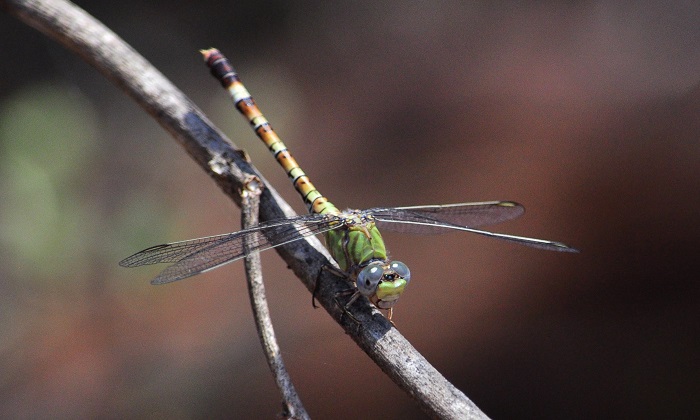
Ndumo Game Reserve, KwaZulu-Natal
Photo by Ryan Tippett
Habitat
The Common Hooktail frequents the sandy fringes of rivers, streams, ponds, pans, and dams. It is less reliant on running water than many other Paragomphus species and is often found around the fringes of still-water environments.

Photo by Ryan Tippett
Behaviour
Males most often perch on damp ground near the waters edge. Females are mostly found in woodlands and scrub a short distance from the water. The Common Hooktail hunts from the ground or a suitable perch and quickly returns to rest after each foray.
The Common Hooktail is on the wing from September to May. It may be active year-round in warmer areas.
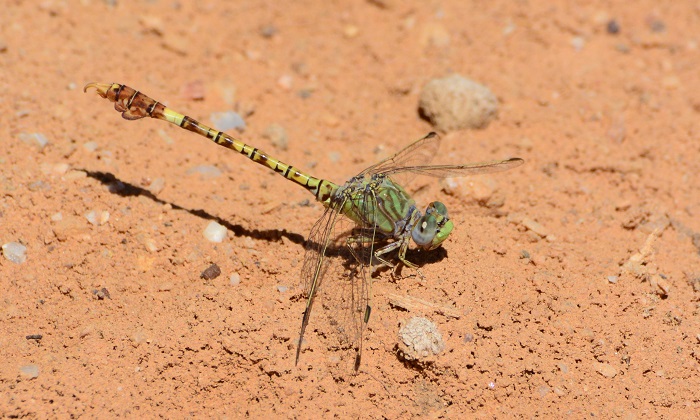
Vanrhynsdorp, Western Cape
Photo by Ryan Tippett
Status and Conservation
The Common Hooktail is common across much of South Africa. It is listed as of Least Concern in the IUCN Red List of Threatened Species. The Common Hooktail is an adaptable species that often inhabits man-made and degraded waterbodies.
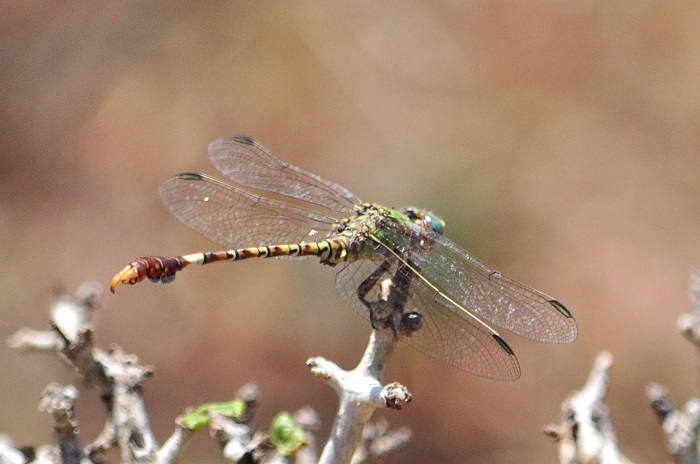
Ndumo Game Reserve, KwaZulu-Natal
Photo by Ryan Tippett
Distribution
Paragomphus genei is widely distributed over much of Africa. It is absent only from the Sahara and parts of the central rainforest block. It is also found in Mediterranean North Africa, southern Europe, and the Middle East.
The Common Hooktail is found virtually throughout South Africa but is less common and more localised in the Eastern, Western, and Northern Cape.
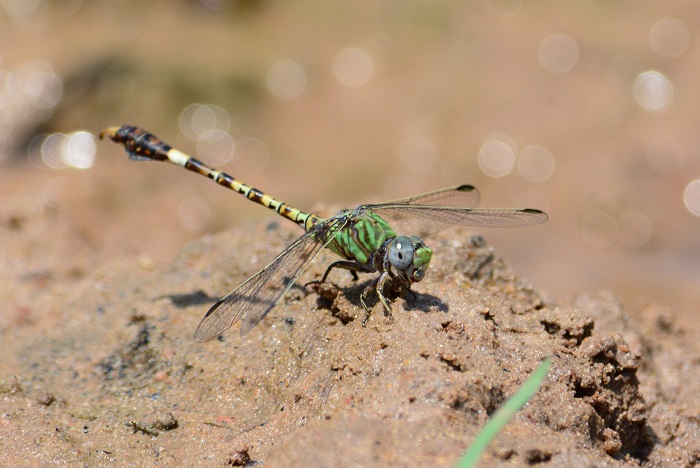
Hluhluwe district, KwaZulu-Natal
Photo by Ryan Tippett
Below is a map showing the distribution of records for Common Hooktail in the OdonataMAP database as at February 2020.

Below is a map showing the distribution of records for Common Hooktail in the OdonataMAP database as of December 2024.
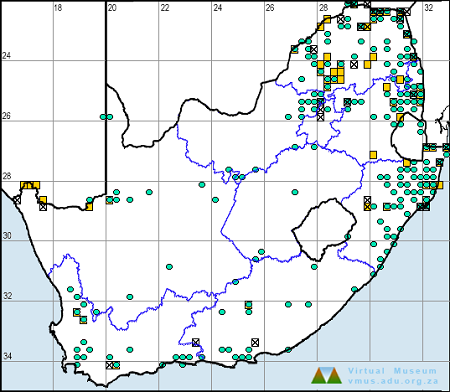
The next map below is an imputed map, produced by an interpolation algorithm, which attempts to generate a full distribution map from the partial information in the map above. This map will be improved by the submission of records to the OdonataMAP section of the Virtual Museum.


Ultimately, we will produce a series of maps for all the odonata species in the region. The current algorithm is a new algorithm. The objective is mainly to produce “smoothed” maps that could go into a field guide for odonata. This basic version of the algorithm (as mapped above) does not make use of “explanatory variables” (e.g. altitude, terrain roughness, presence of freshwater — we will be producing maps that take these variables into account soon). Currently, it only makes use of the OdonataMAP records for the species being mapped, as well as all the other records of all other species. The basic maps are “optimistic” and will generally show ranges to be larger than what they probably are.

Ndumo Game Reserve, KwaZulu-Natal
Photo by Ryan Tippett
Further Resources
The use of photographs by Diana Russell is acknowledged. All other photographs by Ryan Tippett.
Common Hooktail Paragomphus genei (Selys, 1841)
Other common names: Green Hooktail (Alt. English); Gewone Hakiestert (Afrikaans)
Recommended citation format: Loftie-Eaton M; Navarro R; Tippett RM; Underhill L. 2025. Common Hooktail Paragomphus genei. Biodiversity and Development Institute. Available online at https://thebdi.org/2020/06/02/common-hooktail-paragomphus-genei/
References: Tarboton, M; Tarboton, W. (2019). A Guide to the Dragonflies & Damselflies of South Africa. Struik Nature.
Samways, MJ. (2008). Dragonflies and Damselflies of South Africa. Pensoft
Samways, MJ. (2016). Manual of Freshwater Assessment for South Africa: Dragonfly Biotic Index. Suricata 2. South African National Biodiversity Institute, Pretoria
Martens, A; Suhling, F. (2007). Dragonflies and Damselflies of Namibia. Gamsberg Macmillan.
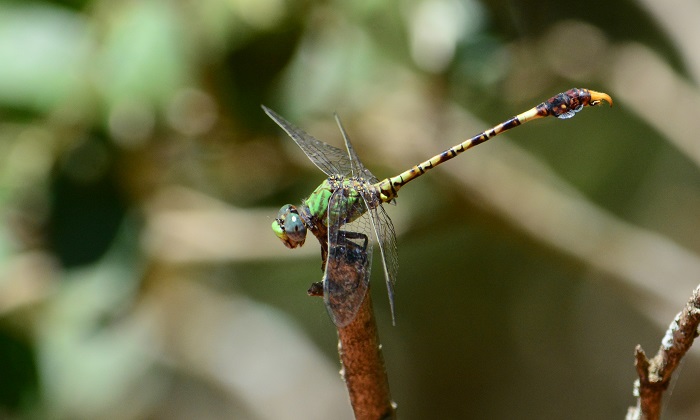
Ndumo Game Reserve, KwaZulu-Natal
Photo by Ryan Tippett

